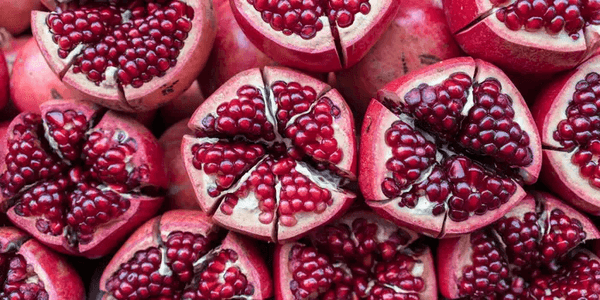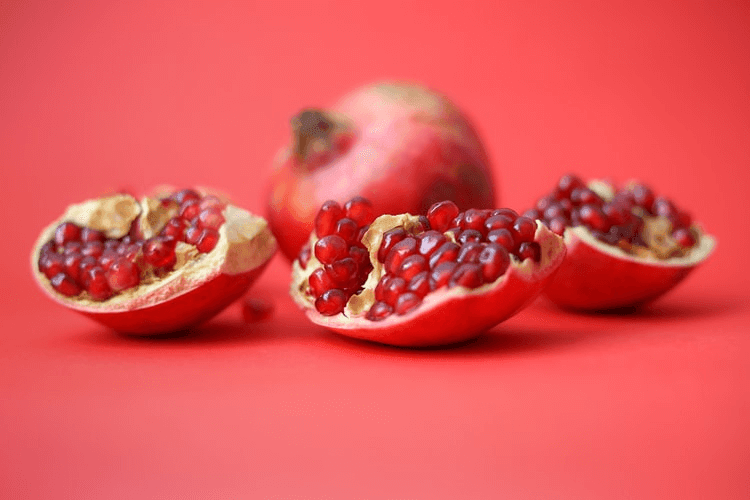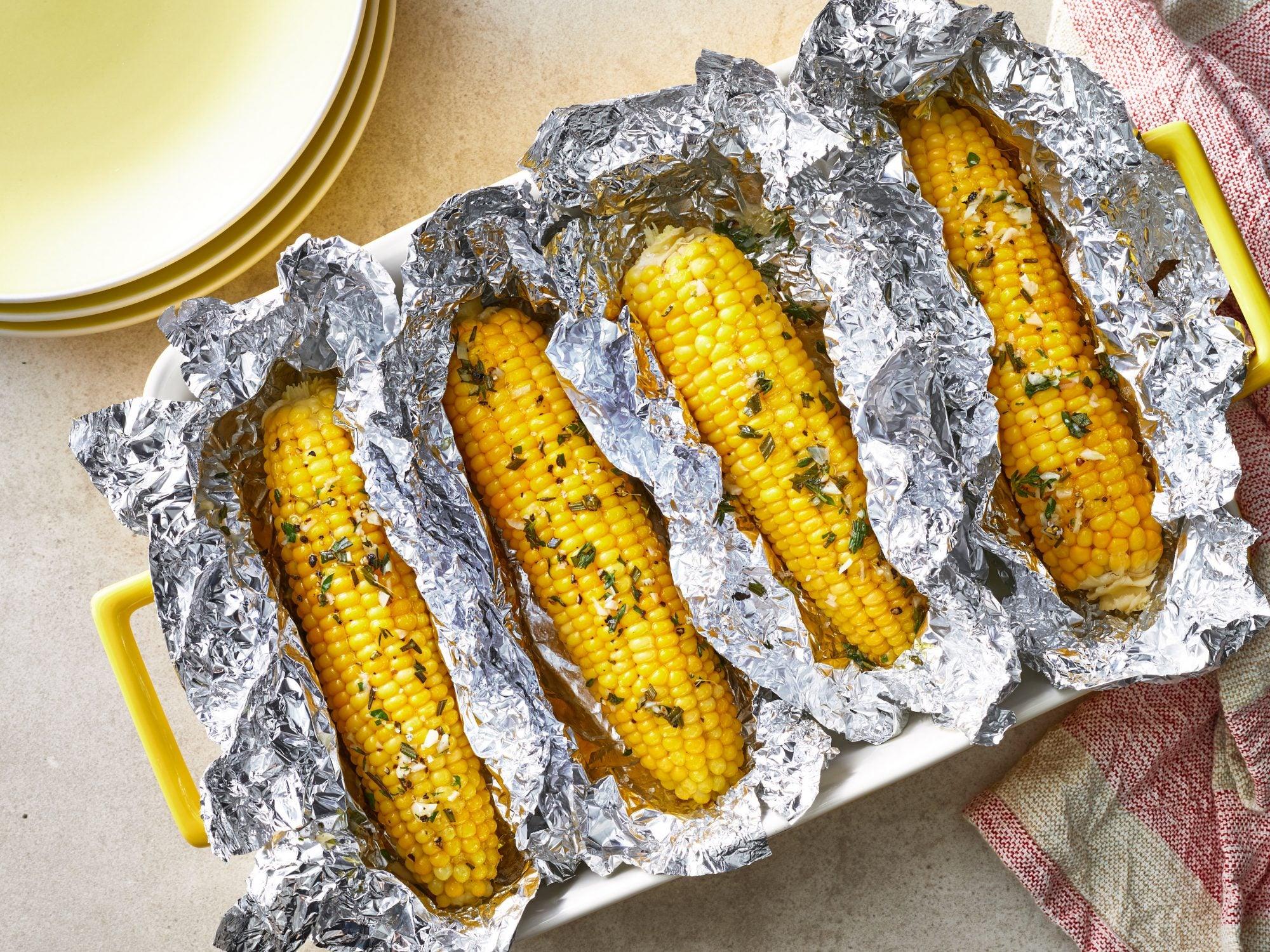TABLE OF CONTENTS
Who wouldn't love to eat a tasty pomegranate with a vibrant red color like a ruby? We all love the sweet or tart flavor of it! But to savor this delicious fruit, we need to cut it first, right? And that's the challenge when you are craving one, the cutting part.
You are not the only person who has avoided purchasing it in the past, owing to the worry that opening them may result in a messy situation. However, once you've successfully cut into one, you'll realize that the technique isn't quite as tricky as it might initially appear to be. Continue reading this article to find out how to cut open a pomegranate so that you can enjoy the delightful advantages of the red fruit throughout the entire season.

How to Pick a Pomegranate
The first thing that we need to do before we learn how to cut it is to pick the right one to eat.
Pomegranates have antioxidants, vitamin C, and fiber, and with the benefits of eating this fruit, people choose to buy it from the store instead of waiting for about three years on its trees. That's why it's very important to know how to pick one.
Pomegranates possess a unique flavor comparable to that of cherries and cranberries. Pomegranates that have skin that is brightly colored and that is also full and somewhat smooth are likely to be sweet.
Keep in mind that the pomegranates with the best flavor are not round. The arils, which are gem-shaped pulp, will get loaded with juice as it matures. The skin will be pushed out, giving it an angular side form. A perfectly round pomegranate that has not yet reached its full maturity. And not all cracked pomegranates are rotten or bad; as long as the crack doesn't reach the flesh, it is still safe and okay to eat.
Now, when you pick it up, it should be heavy. It means that it has a lot of juice inside, unlike a pomegranate fruit that weighs lightly because it only means dry inside. When you tap the fruit, it has a somewhat hollow sound, indicating that it is ripe.
Note: When it's already picked, pomegranate will stop ripening. You should eat it already and don't leave it in fruit storage. That is also why other people would choose to buy a pomegranate at the nearest local farmer's market.
Paring Knife 3.5" | imarku
The Tools You Need
In order to make the process of cutting it possible, specific tools are required; therefore, before beginning, you will need to prepare the following three tools:
- A paring knife – Pick one that is nice and sharp because you will need the knife to cut it. The perfect paring knife for cutting has a blade length of two and a half up to four inches.
- Chopping Board – Check to see if the chopping board is stable before you begin. We advise you to use a mineral-coated cutting board to prevent liquids from seeping through and staining the wood. Using a paper or kitchen towel on the chopping board is an alternative to mineral oil.
- A large bowl – you will need this to hold the seeds. You can also use a container. It depends on you or what is available in your kitchen as long as it can hold the pomegranate's seeds.
If you're in the UK and looking for quality kitchen tools to prepare fruits like pomegranates, check out our UK Warehouse Collection for fast local shipping and exclusive products.
One Tip: To remove the seeds from the pomegranate's husk, you can use a large spoon or even a soup spoon to strike the surface of the fruit in a circular motion.

How to Cut a Pomegranate Peel
After learning how to choose the perfect pomegranate and preparing all the necessary tools, it's time to get started! To cut it, follow this step-by-step guide.
To start things off, the tough husk that surrounds the seeds of the pomegranate seeds is broken through to expose the seeds that are located inside.
- First, take a sharp knife and cut a thin slice off the bottom of the fruit. This will help prevent the seed from falling out. Because of this, the fruit will have a much better chance of staying put atop the cutting board when it is handled in this manner.
- After that, make a cut around the bottom of the top crown by circling the knife's point. Cut to a depth of about half an inch, sufficient to get through the membrane without penetrating the fruit itself. Carefully remove the crown and then throw it away.
- Another option is to make a single horizontal cut across the top to remove it entirely. Remove between 0.5 and 1 inch to avoid slicing into the seeds and releasing any juice.
- After that, begin chopping it in a pattern that resembles a shallow crisscross going from the upper edge to the bottom all the way approximately. You should make every effort to cut between the ridges, as this is where the inner membranes are situated, and if this is not possible, you should at least try to do so. On average, it should have about six distinct slices available for consumption.
- Once all the cuts have been made, position your thumbs in the fruit's upper center (in which the crown was) and gently pry it open. It should disassemble easily.

How to Deseed a Pomegranate
Following the step of cutting the pomegranate into sections, the next step is to separate the seeds from the skin surrounding them. Three distinct approaches can be taken to this situation.
After positioning a section so that the bare side is facing down, the next step is to peel it. When you are holding them, the seeds should be tucked into the glove of the hand that is holding them. The next step is to begin vigorously tapping the husk with the other hand while simultaneously holding a large spoon in the first hand. When the seeds start falling into your hand, you'll know it's time to harvest. While you are chopping the seeds, do so while standing over a Plastic tub or another type of canister. This will help to contain the seeds and stop them from spreading. It is necessary to repeat this for the remaining parts of the segment.
Another method for removing the seeds is to put the segments in a dish of water and leave them there for a few minutes. Using cold water makes it easier to work with the membranes and pith. As soon as it has been immersed, you can begin the process of dislodging the seeds. You can take one seed at a time because they will all drop to the bottom of the bowl. In contrast, the coatings and pulps will rise to the top of a bowl of water because they are lighter. After you've removed all of the seeds, you'll need to remove the membranes and remove the water from the seeds.
The third method consists of extracting the seeds from the segmented fruit themselves. To begin, turn each piece out by holding onto the edges and using your thumbs to press the center of each piece forward while simultaneously turning it over. Additionally, this will force the majority of the seeds to emerge. After you have finished doing so over a dish, use your fingers to remove any seeds still stuck in the membrane. Proceed with the remaining pomegranate segments in the same manner as before.
Just choose from any one of these three methods, and then you will end up with a delicious bowl full of juicy pomegranate seeds! Now you choose from these three methods, and you will have a delicious bowl full of juicy pomegranate seeds!
A medium-sized pomegranate will provide about one cup of its seeds or one-third of a cup of juice. If stored in an airtight container, these can be kept in the refrigerator for up to four days. For a further three months, they can be stored in a freezer. The sooner you eat a freshly picked pomegranate, the more flavorful it will be.

Takeaway
Pomegranates have a distinctive flavor packed with a powerful punch, and they also have several health benefits that make it worthwhile to put in the effort required to open them. They are a delectable addition to a wide range of foods, including cereals, baked goods, salad, and even cookies – recipes that range from sweet to savory and everything in between.
You can also enjoy it quickly and easily by simply nibbling on the fruit's countless tiny and sweet arils – yes, you read that right; you can also eat the whole seed.
If you want to try something new and intriguing in the comfort of your own home, you may put one of these recipes to use. You might never find out, but it's possible that you could cook up an incredible dish in which the pomegranate is the star ingredient.
Who in their right mind would have thought that all you would require is a sharp paring knife, a cutting board, and a few items that are regarded as fundamental necessities? Pomegranate seeds are not difficult to pop, provided that you have enough patience and put in the necessary amount of effort.






















Leave a comment
All comments are moderated before being published.
This site is protected by hCaptcha and the hCaptcha Privacy Policy and Terms of Service apply.